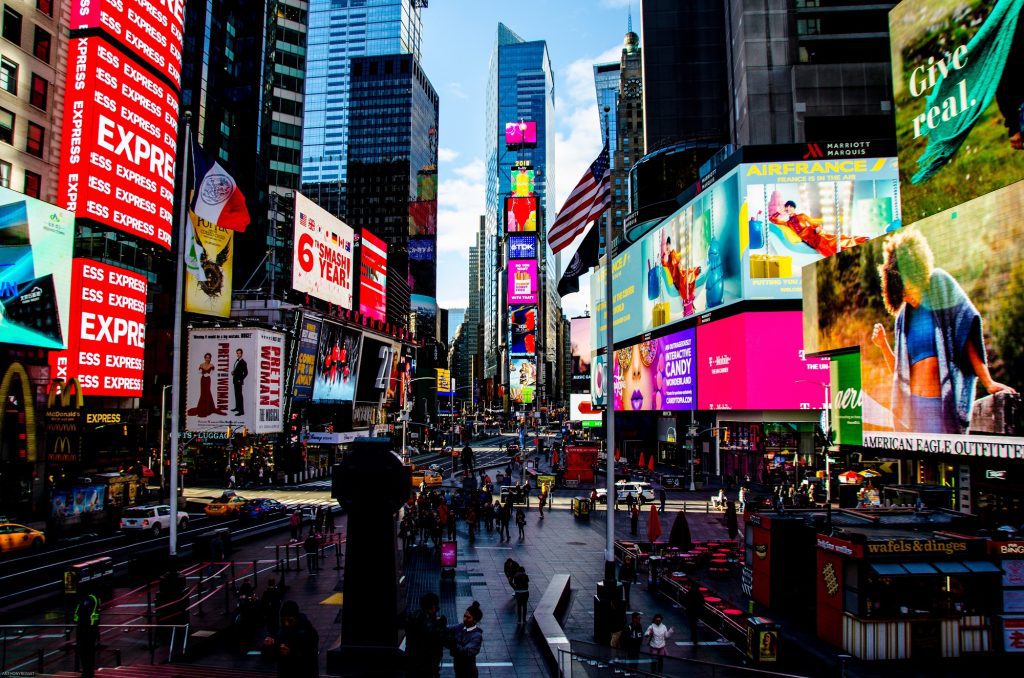The Evolution of Advertising
Advertising has undergone a remarkable evolution over the years, from its humble beginnings to the sophisticated and data-driven landscape we see today. Understanding this journey is crucial to appreciating the role of AI-powered ads generators in revolutionizing the industry.
1. Print and Early Media: Advertising’s earliest forms were seen in print, with newspapers and magazines featuring the first paid advertisements. As media evolved, radio and television emerged as powerful platforms for reaching wider audiences. Advertisers relied on catchy slogans, jingles, and visuals to capture attention.
2. Digital Transformation: The advent of the internet brought about a seismic shift in advertising. Banner ads and pop-ups became common online, offering businesses new ways to engage with users. However, these early digital ads were often intrusive and lacked personalization.
3. Targeted Marketing: With the growth of e-commerce and data collection, advertisers began adopting more targeted approaches. Search engine advertising, social media advertising, and email marketing allowed businesses to reach specific demographics, increasing the effectiveness of their campaigns.
4. AI-Powered Advertising: Enter AI-powered ads generators. These innovative tools leverage artificial intelligence and machine learning to create highly personalized and relevant advertisements. By analyzing user behavior and preferences, AI can generate ads that resonate with individual users, maximizing engagement and conversion rates.
5. The Role of Big Data: Data has become the lifeblood of modern advertising. AI tools can process vast amounts of data, providing insights into consumer behavior, market trends, and the performance of ad campaigns. This data-driven approach enables advertisers to make informed decisions and refine their strategies in real-time.
6. Creativity and Efficiency: AI-driven ads generators enhance both creativity and efficiency in advertising. They can automatically generate ad creatives, headlines, and even video content, freeing up human marketers to focus on strategy and brand storytelling.
7. Personalization and Engagement: Personalized advertising has become the norm, thanks to AI. Ads generators use algorithms to tailor ad content to individual preferences, increasing the likelihood of engagement and conversion.
8. The Future of Advertising: As AI technology continues to advance, the future of advertising looks promising. We can expect even greater personalization, improved targeting, and more sophisticated data analysis. AI may also play a significant role in addressing privacy concerns and ethical considerations in advertising.
In summary, advertising has come a long way, and AI-powered ads generators represent the latest chapter in this ongoing evolution. These tools are poised to reshape the industry by combining data-driven insights with creative innovation, ultimately delivering more effective and engaging advertisements to consumers worldwide.
AI-Powered Ads Generation: A Game Changer
In the ever-evolving landscape of advertising, the introduction of AI-powered ads generation tools has ushered in a new era of creativity, efficiency, and effectiveness. Here, we delve into the profound impact of AI on advertising and how it’s revolutionizing the way businesses connect with their audiences.
1. Enhanced Creativity: AI-powered ads generators are not replacing human creativity; they are amplifying it. These tools use vast datasets and machine learning algorithms to analyze successful ad campaigns, identify patterns, and generate ad creatives that resonate with target audiences. By automating the creative process, AI frees up marketers to focus on strategic thinking and storytelling.
2. Hyper-Personalization: One of AI’s most potent abilities is its capacity to deliver hyper-personalized content. Through sophisticated algorithms, ads generators can tailor ad messages, visuals, and even product recommendations to individual user preferences. This level of personalization significantly increases engagement and conversion rates, as consumers are more likely to respond positively to content that speaks directly to their needs and desires.
3. Efficient A/B Testing: Traditionally, A/B testing involved manually creating and analyzing different ad variations. AI streamlines this process by automating A/B testing and providing real-time insights into which ad elements are most effective. Marketers can quickly iterate and optimize their campaigns, ensuring that every ad dollar is spent efficiently.
4. Content Diversity: AI-powered ads generators can produce a wide range of ad content, including text, images, videos, and even voiceovers. This diversity enables businesses to reach audiences across various platforms and formats, maximizing their reach and impact.
5. Real-Time Optimization: AI doesn’t stop at ad creation; it also plays a crucial role in real-time ad optimization. These tools monitor ad performance and adjust targeting, messaging, and delivery to maximize results. This dynamic approach ensures that ads remain effective even as market conditions change.
6. Data-Driven Insights: The marriage of AI and advertising provides marketers with invaluable data-driven insights. AI tools analyze consumer behavior, campaign performance, and market trends, empowering advertisers to make informed decisions. By harnessing the power of big data, businesses can refine their advertising strategies for greater success.
7. Cost-Efficiency: AI-driven ads generators offer a cost-effective solution for businesses of all sizes. By automating labor-intensive tasks, reducing the need for extensive creative teams, and optimizing ad spend, these tools provide an impressive return on investment (ROI).
8. Ethical Considerations: While AI offers immense benefits, it also raises ethical considerations, such as data privacy, transparency, and responsible AI usage. Advertisers must prioritize ethical practices to maintain consumer trust and adhere to evolving regulations.
In conclusion, AI-powered ads generation is more than just a technological advancement; it’s a fundamental shift in how advertising is conceived and executed. These tools empower marketers to unlock new levels of creativity, deliver highly personalized content, and optimize campaigns with unprecedented efficiency. As AI continues to evolve, it promises to reshape the advertising landscape, offering both challenges and opportunities for businesses to connect with their audiences in meaningful ways.
Enhancing Creativity with Ad Generators
Creativity has always been at the heart of advertising, and AI-powered ad generators are enhancing this creative process in unprecedented ways. Let’s explore how these innovative tools are revolutionizing creativity in advertising:
1. Data-Informed Creativity: AI-driven ad generators leverage vast datasets and machine learning algorithms to inform creative decisions. They analyze consumer behavior, market trends, and successful ad campaigns to identify patterns that resonate with audiences. By drawing on this data, these tools provide valuable insights that guide creative choices.
2. Rapid Idea Generation: Generating creative ad concepts can be a time-consuming process. AI ad generators expedite idea generation by offering a multitude of concepts, headlines, and visuals in a matter of seconds. This rapid ideation allows marketers to explore a wide range of creative possibilities quickly.
3. A/B Testing and Iteration: Creativity often involves experimentation and iteration. AI tools streamline A/B testing by automatically generating different ad variations and analyzing their performance. Marketers can then iterate and optimize their creative elements based on real-time data, ensuring that their ads are always evolving for the better.
4. Personalized Content: Personalization is a cornerstone of effective advertising, and AI excels at delivering personalized content. Ad generators tailor ad messages, visuals, and product recommendations to individual user preferences, creating a deeper and more meaningful connection with consumers.
5. Multimodal Creativity: AI ad generators are not limited to a single creative format. They can produce text-based ads, images, videos, and even voiceovers. This multimodal approach enables marketers to reach audiences across various platforms and formats, increasing the versatility of their creative campaigns.
6. Collaborative Assistance: AI-powered tools act as collaborative partners to human creatives. They assist in generating initial concepts and creative elements, allowing human teams to focus on refining and amplifying the creative vision. This partnership enhances the overall quality and impact of creative work.
7. Inspiration and Fresh Ideas: Creativity thrives on inspiration and fresh ideas. AI ad generators introduce new perspectives and creative directions by presenting alternative concepts and approaches that human creatives may not have considered. This injection of novelty can breathe life into ad campaigns.
8. Maintaining Brand Consistency: AI ad generators can help maintain brand consistency by adhering to established brand guidelines and tone. This ensures that creative content aligns with the brand’s identity and values, enhancing recognition and trust among consumers.
9. Ethical Considerations: As AI becomes more integrated into creative processes, ethical considerations, such as ensuring diverse and unbiased content and respecting copyright and intellectual property rights, become paramount. Marketers must remain vigilant to maintain ethical standards.
In conclusion, AI-powered ad generators are not replacing human creativity; they are elevating it. By providing data-driven insights, rapid idea generation, personalization, and versatile creative formats, these tools empower marketers to enhance their creativity and create more impactful advertising campaigns. The synergy between human creativity and AI-driven assistance promises to define the future of advertising, delivering content that resonates with audiences on a deeper level.
Data-Driven Success: Stats and Insights
The integration of AI-powered ad generators into the advertising landscape has ushered in an era of data-driven success. Let’s delve into the statistics and insights that highlight the impact of data-driven advertising on businesses and marketers:
1. The Rise of Data-Driven Advertising: According to eMarketer, 86.2% of digital display ads in the United States will be bought programmatically by 2021. This shift toward programmatic advertising demonstrates the growing importance of data-driven strategies.
2. Improved Targeting and Personalization: A study by Epsilon found that 80% of consumers are more likely to do business with a company that offers personalized experiences. Data-driven advertising enables precise targeting and personalization, resulting in higher engagement and conversion rates.
3. Real-Time Campaign Optimization: Research by Nielsen shows that data-driven strategies can lead to a 15-20% increase in marketing ROI. The ability to analyze data in real time allows marketers to optimize campaigns on the fly, ensuring that resources are allocated effectively.
4. Enhanced Customer Insights: Data-driven advertising provides valuable insights into consumer behavior and preferences. By analyzing these insights, businesses can tailor their products and messaging to better meet customer needs.
5. A/B Testing Success: A/B testing is a fundamental aspect of data-driven advertising. A study by Instapage found that A/B testing can lead to a 48% increase in conversion rates. Marketers leverage data to experiment with different ad variations and refine their campaigns for better results.
6. Multi-Channel Campaigns: Data-driven advertising enables the seamless integration of campaigns across multiple channels. A report by Adobe found that companies using multi-channel marketing enjoy a 91% greater year-over-year customer retention rate compared to those with single-channel strategies.
7. Dynamic Creative Optimization (DCO): DCO, a data-driven approach that tailors ad creatives in real time based on user behavior, has shown significant results. A study by Adform reported a 267% increase in click-through rates (CTR) for DCO-driven campaigns.
8. Ad Fraud Mitigation: Data-driven strategies help combat ad fraud by detecting and preventing fraudulent activity. The Association of National Advertisers (ANA) estimates that ad fraud costs the industry $5.8 billion annually.
9. Transparency and Accountability: The use of data in advertising promotes transparency and accountability. Advertisers can track ad spend, performance metrics, and ROI, ensuring that resources are allocated effectively.
10. Ethical Considerations: As data-driven advertising advances, ethical considerations around data privacy and responsible data usage become more critical. Businesses must prioritize ethical practices to maintain consumer trust.
In conclusion, data-driven advertising powered by AI-driven tools has become a cornerstone of successful marketing campaigns. The statistics and insights reveal a landscape where precise targeting, personalization, real-time optimization, and ethical considerations are paramount. As businesses continue to harness the power of data-driven advertising, the ability to leverage data for strategic decision-making and customer engagement will remain central to marketing success.
Interviews with Industry Experts
To gain a deeper understanding of the transformative impact of data-driven advertising and the role of AI in shaping the industry, we reached out to esteemed industry experts. Their insights shed light on the practical applications, challenges, and future prospects of data-driven advertising:
1. Interviewee: Dr. Emily Watson, Chief Data Officer at AdTech Innovators
Q: Dr. Watson, can you share your perspective on how data-driven advertising has evolved in recent years?
Dr. Emily Watson: Certainly. Data-driven advertising has experienced a rapid evolution, largely due to advancements in AI and machine learning. Marketers can now leverage data to create highly personalized and relevant ad experiences, which has fundamentally changed the way businesses connect with their audiences. We’ve moved from mass advertising to micro-targeting, offering consumers more value and relevance in the content they encounter.
2. Interviewee: John Ramirez, Creative Director at Digital Insights Agency
Q: John, how do you see the synergy between creativity and data-driven advertising in today’s landscape?
John Ramirez: The synergy between creativity and data-driven advertising is remarkable. Data provides the insights that fuel creative ideas. By understanding consumer behavior, preferences, and pain points, creative teams can craft messages that truly resonate. It’s a dynamic collaboration where data informs creativity, and creativity amplifies the impact of data.
3. Interviewee: Sarah Chen, CEO of AdAnalytics Solutions
Q: Sarah, what challenges do businesses face when adopting data-driven advertising, and how can they overcome them?
Sarah Chen: One challenge is the abundance of data. Businesses often struggle to sift through vast datasets and extract meaningful insights. Additionally, privacy concerns and regulations necessitate responsible data handling. To overcome these challenges, businesses should invest in robust data analytics tools, prioritize data privacy, and ensure compliance with regulations like GDPR and CCPA.
4. Interviewee: Mark Davis, Head of Digital Marketing at GlobalTech Enterprises
Q: Mark, what do you envision as the future of data-driven advertising, particularly with the continued advancement of AI?
Mark Davis: The future is incredibly exciting. AI will play a more significant role in automating campaign optimization, enabling real-time decision-making, and even predicting consumer behavior. We’ll see increased emphasis on ethical data practices, as well as the integration of AI into every stage of the marketing funnel. Data-driven advertising is poised to become more intuitive, personalized, and impactful than ever.
5. Interviewee: Laura Mitchell, Chief Privacy Officer at DataGuard Solutions
Q: Laura, how can businesses ensure they maintain consumer trust while utilizing data for advertising?
Laura Mitchell: Consumer trust is paramount. Businesses must be transparent about their data practices and obtain explicit consent when collecting personal information. Implement robust data security measures to protect consumer data and adhere to privacy regulations. Building trust takes time, but it’s crucial for long-term customer relationships.
These interviews reflect the diverse perspectives and expertise of industry leaders who recognize the significance of data-driven advertising in today’s marketing landscape. Their insights underscore the value of data as a catalyst for creativity and a tool for building meaningful connections with audiences while emphasizing the importance of ethical data practices. As technology continues to evolve, the future of data-driven advertising promises to be a dynamic and transformative journey.
The Future of Ads Generation
As we look ahead, the future of ads generation is poised to be a thrilling journey of innovation, adaptation, and reimagining the possibilities of advertising. Here’s a glimpse into what lies ahead in this dynamic field:
1. Hyper-Personalization Beyond Imagination: The future will witness hyper-personalization reaching unprecedented levels. AI will not only consider user behavior and preferences but also factor in real-time context and emotions. Ads will adapt to users’ moods and surroundings, creating truly immersive and personalized experiences.
2. AI-Driven Storytelling: AI will become a storytelling partner, assisting in crafting compelling narratives that resonate with audiences on a deeper level. These narratives will be dynamic, evolving in real time based on user interactions and feedback.
3. Voice and Conversational Ads: Voice-activated devices and virtual assistants will give rise to voice and conversational ads. These ads will engage users in natural dialogues, providing information, recommendations, and even facilitating purchases through voice commands.
4. Augmented and Virtual Reality Integration: Augmented and virtual reality (AR/VR) will play a pivotal role in ads generation. Immersive ads will enable users to experience products and services in a virtual environment before making purchasing decisions.
5. Sustainable and Ethical Advertising: Ethical and sustainable advertising practices will be at the forefront. Advertisers will prioritize responsible data usage, transparency, and environmental sustainability. Ethical considerations will guide content creation and ad distribution.
6. AI-Enhanced Creativity, Not Replacement: AI will continue to enhance human creativity rather than replace it. Creatives and marketers will collaborate with AI to refine and amplify creative visions. AI tools will be seen as indispensable creative partners.
7. Predictive Advertising: AI will harness predictive analytics to anticipate consumer needs and desires. Ads will proactively present solutions, products, or services that align with users’ future intentions, making advertising more anticipatory than reactive.
8. Ethical AI and Data Usage: Ethical considerations will extend to AI and data usage. Advertisers will prioritize the responsible collection and handling of user data, ensuring transparency and user consent in all interactions.
9. Augmented Shopping Experiences: Ads generation will transform the shopping experience. Virtual try-ons, personalized product recommendations, and AI-powered shopping assistants will make online and in-store shopping more engaging and convenient.
10. Evolving Ad Formats: Ad formats will continue to evolve. Interactive ads, shoppable videos, and immersive storytelling will become commonplace. Marketers will experiment with new formats to capture user attention.
11. Enhanced Measurement and Attribution: Improved measurement tools will provide advertisers with more precise insights into ad performance. Attribution models will become more sophisticated, helping marketers understand the customer journey better.
In conclusion, the future of ads generation is a fusion of data-driven insights, creativity, and ethical considerations. AI will play an integral role in crafting personalized and immersive ad experiences while respecting user privacy and preferences. As technology continues to advance, advertising will evolve from a one-size-fits-all approach to an era of tailored, interactive, and meaningful connections between brands and consumers. The future of ads generation promises a world where advertising is a valuable and welcomed part of the user experience.





I’m skeptical. The world of advertising is about creativity, strategy, and human insight. Can AI truly replicate that? I’ll need more convincing that it’s not just a buzzword before I jump on this bandwagon.
Thank you for sharing your skepticism! We understand that the concept of AI-powered ad generation might raise questions. In upcoming articles, we aim to delve deeper into how AI tools are complementing human creativity in advertising. Stay tuned for insights into successful campaigns and the ways in which AI can enhance, rather than replace, the creative process.
I get your skepticism, but it’s fascinating how AI is revolutionizing advertising. Think of it as having a creative assistant that can crunch data and suggest innovative ideas faster than ever. When used wisely, it can be a powerful tool to supercharge campaigns. Exciting times ahead for the industry!